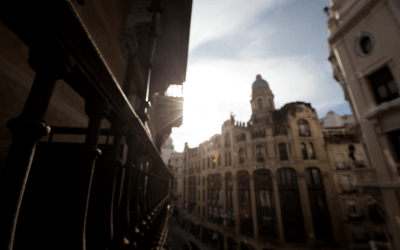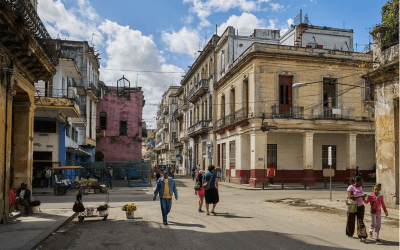Costilla County, Colorado
Contested Landscapes
An enduring legacy of the Southwest is its diversity of urban and rural landscapes. Albuquerque, San Antonio, and Tucson are symbolic of the evolution of rural spaces engulfed by growth; hyper-development and sprawl are blurring their cultural landscapes. The emerging ultramodern mega-cities are gentrifying historic streetscapes and in the process of museumizing barrio enclaves. To obtain a micro-view of influence of population growth and unsustainable development on culturally influenced landscapes, one must look to rural areas. The ranching and agricultural centers near the Mexican border are among those most influenced by this trend. This discussion will refocus on contemporary impacts to the cultural landscape in the less populated historic zone of residence in the Southwest.
The upper reaches of the Rio Grande del Norte, or the Rio Arriba, extends from northern New Mexico into Colorado’s San Luis Valley. Geopolitically, the Rio Grande Bioregion is composed of seven counties in New Mexico and two in the San Luis Valley of south-central Colorado. Three of the New Mexican counties have Pueblos with Hispano villages sited in close proximity. One of the counties has Pueblos and the Jicarilla Apache Reservation within its boundary. Together Rio Arriba, Sandoval, Santa Fe, and Taos Counties form the old Hispano settlement core of the Rio Arriba. Costilla and Conejos County in Colorado and Mora and San Miguel far eastern edge of New Mexico represent later established traditional Hispano enclaves. Costilla County, Colorado, is the only county in the Rio Arriba without public lands.
It is not difficult to understand why Amerindians and Hispanos (as Latinos are known in this part of the country) of the Rio Arriba sited their communities along riparian floodplains near upland watershed areas. Aptly described as a wooded upland peninsula with semi-arid lowlands, the Rio Arriba depends on snowmelt and rainwater draining from the mountain ranges into the Rio Grande. The Rio Arriba ecosystem through which river flows varies from desert to alpine and arctic at the peaks. Composed of mountain ranges, foothills, rangelands, mesas, and flatlands, the Rio Arriba was ideal for the agropastoral subsistence-based Pueblo and Hispano settlements.
The processes of Spanish Colonization of the Rio Arriba began in 1598. To retain their autonomy the Pueblos fiercely defended their boundaries from encroachers and often revolted against colonial domination. Boundary maintenance protected homes, fields, water systems, and ritual spaces from adverse changes. Today while changed by gaming, Pueblo landscapes continue to be unique culturally influenced spaces.
In contrast, to the Pueblos (whose ancestors emerged in the region by 10,000 BC), Hispanos settled under the auspices of Spanish and later Mexican land grants. While land grants lured Old World immigrants into the New World (to establish frontier-outposts like the Rio Arriba) colonization commenced badly. To control the process and to ensure uniformity of its colonies, the Spanish Crown issued the “Law of the Indies” to regulate siting, orientation of settlements, and construction of plazas. Royal provisions also acknowledged the need to keep colonists out of native spaces to maintain a semblance of moral order. Often Colonists in the isolated periphery ignored the “Laws” which led to clashes with the Pueblos. Eventually, both groups co-existed by maintaining distinct boundaries. By the Mexican Era (1821-1846), the interplay between Pueblos and Hispanos became one of accommodation and trade. By this period the typical Rio Arriba villager was a mestizo, or of mixed-blood ancestry. Most villagers lived in an extended family, farmed a small plot, and shared livestock in partido with wealthier stockholders.
In the Mexican Period the cultural landscapes of the Rio Arriba contained Pueblo influence features, with Iberian-Moorish overtones. In part this was related to the construction of Pueblo Missions. However, because the Pueblos and Hispano villages of the Rio Arriba required proximity to water their landscapes were similar. Both had a self-contained water network with distinct field patterns, garden spaces, and pasturelands. In Hispano villages, the division of fields correspond to the construction of the Moorish-influenced irrigation systems, or acequias. Formation of long lot patterns, or extensiones, created parallel strips running between and at right angles to acequias.
This scene changed after the occupation of the region by the United States Army of the West in 1846. In return for seceding California, New Mexico, and Texas to the United States for 15 million dollars (or 529,017 square miles for 48 cents an acre), Mexico insisted that the Americans sign the Treaty of Guadalupe Hidalgo. Among other things the treaty protected property and common lands of the sedentary Pueblos and Mexican citizens. Although the Pueblos became wards of the Federal Government, their lands were granted sovereign status. In contrast, Spanish and Mexican land grants and communal spaces diminished through a protracted adjudication process operating under the direction of land rings. Once dislocated from their holdings the self-reliant village economy plummeted. After the common lands were enclosed, the Rio Arriba became a peripheral resource colony with its residents functioning as low-paid wage laborers.
The trends setting at the onset of the American Period established real estate speculation and the current mode of exploitation of the natural environment. Today the working landscapes of rural Rio Arriba have fallen into the orbit of a political economy controlled by multi-national corporations and amenity tourism. This metamorphosis did not occur overnight. Long before the testing of the first atomic bomb in the New Mexican desert in 1944, life in the Rio Arriba was difficult for villagers who received little economic support from the state and federal government. Not only were the schools impoverished, health services were limited. After World War II into the 1960s, the Rio Arriba lost a significant portion of its population because of land losses. In the 1960s, the Rio Arriba erupted! To quiet the anger over loss of the land grants and as a “Band-Aid” over the cancer of displacement, War on Poverty Programs pumped millions of dollars into the Rio Arriba to alleviate its social and economic problems.
Throughout the 20th century, a vanguard of intellectuals residing at Taos and Santa Fe reinvented the region from a plundered colony into a romantic hide-a-way. By popularizing the vast open spaces and romanticized the regional cultures artists and novelists helped to establish the gentrification process. The current rush to purchase farmland, adobe homes in core villages, and the trend to remodel plaza streetscapes into Disneyland replicates the remaking of Jackson Hole, Wyoming, Aspen, Colorado, and Sun Valley Idaho. In combination with unsustainable corporate schemes, the cultural landscapes of the Rio Arriba are at the cross-roads. It is up to those most impacted and most bonded to the landscape to mediate the powerful dynamics of over-development and the negative outcome on the landscape.
The Contemporary Dilemma: Costilla County at the Crossroads
Costilla County, Colorado, epitomizes the tension experienced by rural communities in the Rio Arriba. Located in south-central borderlands between Colorado and New Mexico, Costilla County is an egomania of unsustainable land and resource use. This area illustrates ongoing conflicts between Hispanos, who view community landscapes as a part of their heritage, and real estate developers and extractive industries who exert their private property rights to the detriment of the environment. As the ascending forces of tourism commodify the culture, villages move towards a tourist economy and gentrification.
Situated on the eastern margins of nearly enclosed alpine uplands known as El Valle de San Luis, or the San Luis Valley, are the Rio Culebra villages of Costilla County. The Rio Culebra villages are a variation of settlements established in the Taos Valley, New Mexico. The county emerged from a million-acre Mexican Era land grant known as the Sangre de Cristo. The Sangre de Cristo was one of two of the largest Mexican Era land grants owned by a French Canadian merchant living at Taos. However, as he was unable to colonize the land, the grantee offered New Mexican settlers, or pobladores, rights to access to the uplands to hunt, gather wood, and pasture animals. Arriving in the 1851, agropastorialists built plazas, grew subsistence crops, and pastured their animals in several river valleys. By 1861, the entire San Luis Valley became a part of Colorado Territory. Regardless of politically imposed boundary lines, the pobladores replicated settlement patterns that their ancestors established in northern New Mexico since the eighteenth century. Elements of their working landscape include domestic, religious, and agricultural buildings; extensiones and acequias; and, la Vega, Colorado’s only historic commons. Taken together these features reflect the evolution of Hispano vernacular architecture and cultural landscape in southern Colorado.
In the 1960s, land speculators descended on Costilla County. Most devastating, was the sale of a 77,000-acre uplands known as La Sierra. Purchased with a “cloud over the title,” for $7.00 an acre, La Sierra contained usufructuary rights to hunt, fish, and gather wood. Eventually in a long and often tainted legal process, the owner enclosed the uplands. The economy sank and the county experienced the highest out-migration in the state. Speculators continued to purchased smaller tracts at tax auctions ultimately accumulating mesas and desert lands. Early in the early 1970’s, publishing tycoon Malcolm Forbes purchased the mountainous uplands at the north. Speculators and Forbes extensively subdivided the landscape and carved flatlands and mountains with roads. Of the 75,000 square miles in Costilla County 33% of the land has been subdivided into residential lots. Currently there are over 43,000 absentee landowners, claiming 50,000 parcels, in 30 subdivisions. This record gives Costilla County the distinction of being Colorado’s most subdivided rural landscapes.
While there is yet no consensus among Hispanos on how to mediate critical issues, there is a growing awareness of uncontrolled growth and development. In the past decade Colorado was a Western epicenter of growth. Likewise, Costilla County became a popular destination. In the past decade, the old village populations have faced an amalgam of newcomers who are politically conservative, middle-class, retired or anti-government “hard scrabble” types. Newcomers resist land use planning by Hispanos, as they view the county as the Wild West, because real estate brokers promoted the lack of restrictions and low-taxation to sell property.
Low-income buyers purchase land in the unregulated subdivision. Most purchase five acres, sight unseen. The majority are self-employed service workers, disabled, or retired. All newcomers want open space, fresh air, and good schools. However, when they arrive they find no water, utilities, over-whelmed schools, and one clinic. A few of the corporate-based subdivisions, such as Forbes, have high-end gated communities with protective covenants and access to utilities in many areas. Collectively all subdivisions are rapidly transforming the agricultural landscape into rural suburbia filled with manufactured homes, second homes, and hobby ranches. The county is forced to build more roads and provide emergency, police, and fire service in exchange for very modest property taxation from landowners and no support from brokers.
Large portions of the mountainous uplands are in the hand of absentee corporate owners. The Sangre de Cristo Mountains were extensively logged and mined since 1989. Much of the range is now owned by three corporations under the control of a single investor. The owner, CEO of a subsidiary of one of the world’s fastest growing multi-utilities, posts armed guards around La Sierra to keep Hispanos out. Adding insult to injury he is micromanaging the watershed by creating ponds and waterfalls mid-stream, straightening the river, and destroying the riparian habitat. By deliberately refusing to divulge plans and ignoring land use regulations, this approach is antithetical to their claims of wanting to be a “Good Neighbor.”
Solutions and Planning Tools
In a last ditch effort to balance growth, to control unsustainable development, and to protect the village landscape, Hispanos found pro bono attorneys to help the county enact state approved land use regulations. In 1998, Costilla County was one of the last Colorado county to established a Planning and Zoning Office, create a zoning district plan, and implement a comprehensive land use plan. To help in the process, sophisticated tools such as a Geographic Information System (GIS) were introduced to track and document land use activity. Although there was opposition from developers and private homeowners, a framework for providing some semblance of control emerged.
Even after all of the years of public input and work to set-up the planning infrastructure, problems continue. It is clear that corporate landowners are destabilizing the process. Now, newcomers and developers feel that if the rich are exempt from the code, they also can disregard regulations. The challenge remains to see if community tenacity can prevail despite rapid change.
Arnold Valdez is a Loeb fellow at the Harvard Graduate School of Design, and the founder of the Costilla County Planning and Zoning Office. María Mondragón-Valdez is a doctoral student at the University of New Mexico, Department of American Studies, Albuquerque, NM. The husband-wife team work from Valdez and Associates in San Luis, Colorado, and can be reached at valdez@amigo.net.
Related Articles
Forum on U.S. Hispanics in Madrid
The Trans-Atlantic Project, an academic initiative to study the cultural interactions between Europe, the U.S. and Latin America has been invited by Casa de América, Madrid, to present a …
Cuba Study Tour
Waiting at José Marti International Airport for the first Harvard students to arrive for January’s DRCLAS Cuba Study Tour, my companion, a theater critic at Casa de las Américas, commented to me …
The Soulfulness of Black and Brown Folk
And so, by faithful chance, the negro folksong – the rhythmic cry of the slave – stands to-day not simply as the sole American music, but as the most beautiful expression of human experience …




